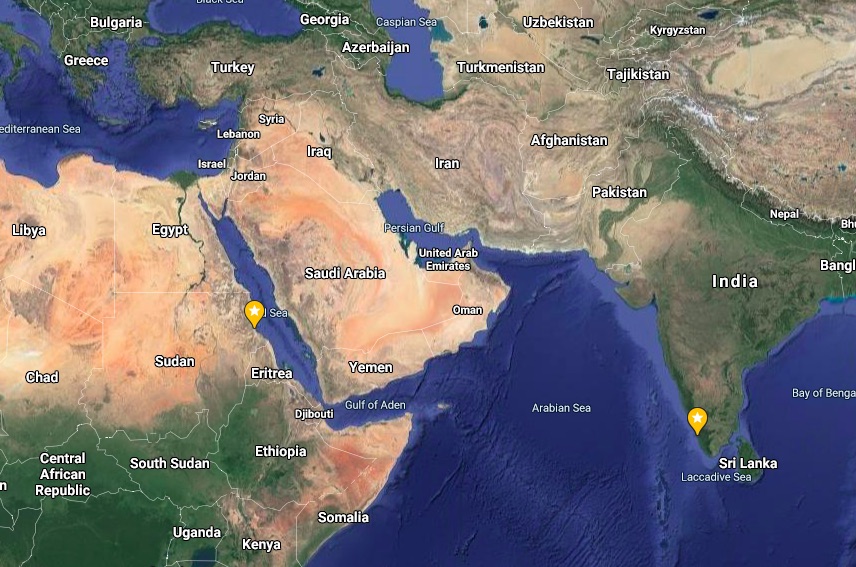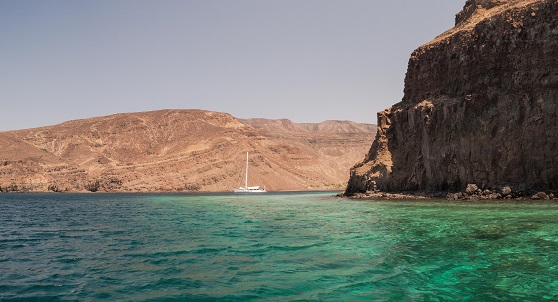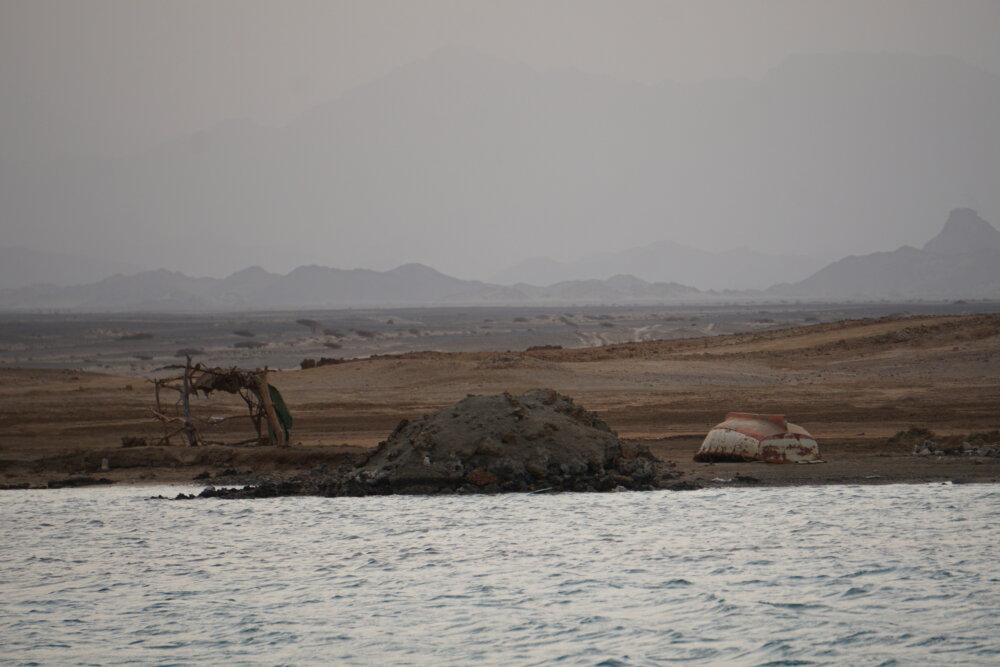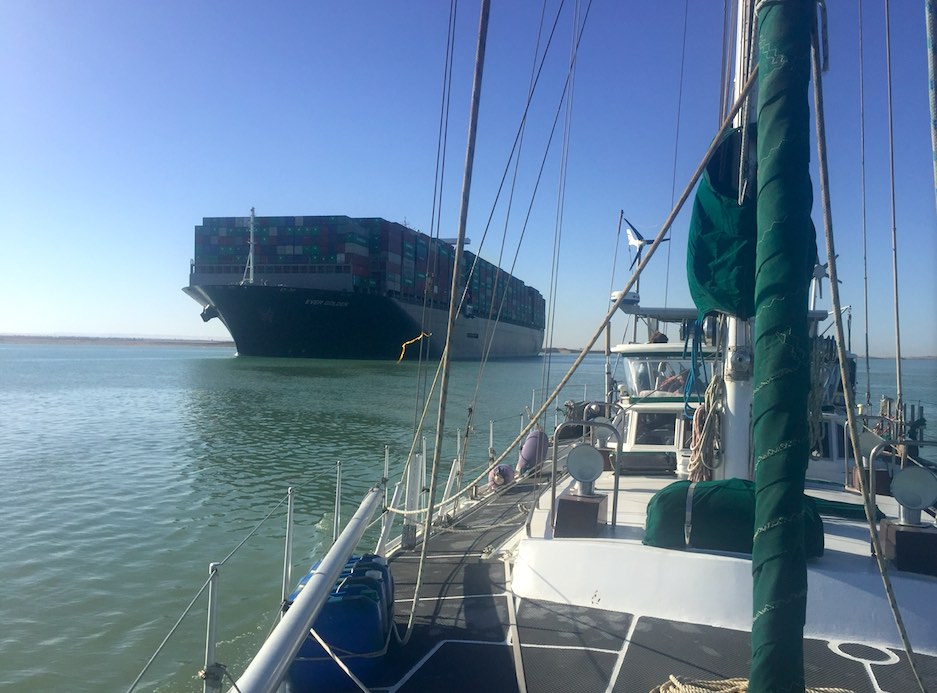Travelling North and South through the Red Sea
Experienced cruiser and Red Sea passagemaker Wade Alarie, admin for the Red Sea Passage Facebook Group, outlines the latest situation for those planning a Red Sea passage. See further updates from Wade in the comments section at the bottom of the report.
Published 4 years ago


- SV Joana made a successful passage from Cochin, India to Turkey through the Red Sea and Suez Canal.
I am pleased to report that despite the fluctuating conditions caused by COVID-19 restrictions, yachts are still travelling North and South through the Red Sea.
Join the Red Sea Passage Facebook Group:
I am an Administrator for the “closed” and “private” Facebook Group called “Red Sea Passage”. Membership is restricted to over 600 members who have either made the passage, or will soon. In addition, we have now permitted relevent shore side agents to join, representing ports in India, Maldives, Djibouti, Sudan and Egypt. Sadly, many people continue to sail through this area without belonging to our group, for unknown reasons. I implore sailors to join the group, so that you can acquire the best information and coordinate with others to make a safe passage. If you are not a member, and are contemplating a passage through this area, please email me at wade@joana.ca to join.
Numbers:
- 2019: 75 total
- 2020: 55 total (Northbound 40, Southbound 15)
- 2021: 24 total (Northbound 14, Southbound 10)
- 2022: 50-60 are expected to complete the voyage


- SV Anthem in Echo Bay gorge, Djibouti
Gulf of Aden and Pirates:
I can name hundreds of yachts that have safely passed through the Gulf of Aden in recent years (probably only half the boats that actually transit take part in the FB group). My wife and I sailed (SV JOANA) from India to Turkey, in January-June 2020. In my opinion, there has not been a pirate attack against a yacht since 2011. The coalition forces don’t really “encourage” cruisers in the area, yet, but they tolerate us – particularly if we follow their guidance. All of which is explained in our FB Group, or alternatively – can be found and understood by reading the wealth of information provided on the internet (by googling MSCHOA and UKMTO).
Convoys are thought to be a bad idea. They are unwieldy to manage and pose a more visible and attractive target. The military presence in the area (three different missions are active, one managed by NATO, one by the EU and another one by the French) discourage anything more than a couple or three boats travelling “together”. Its highly unlikely you will get a military escort, but the ships and planes are there – constantly patrolling, and you will most likely see one or more.
There is also the fact that Yemen is in civil war. You must avoid the coast of Yemen, and be aware of both government and “terrorist” naval elements that are sometimes seen in the area. You could easily be mistaken by either government or opposition forces. Stay away.


- Marsa Inkefal, Sudan
Limited or No Shoreside Support:
Although the risk of pirate attack is very low, this is still quite a long ocean passage, with all the usual weather, equipment malfunction and charting challenges that you would expect. Getting shoreside support for boat system failures can be very challenging. Also, charts are incredibly poor in this area of the world, and you need Google Earth images to complement whatever digital charts you plan to use. Unfortunately, there are several yachts that have been “lost” on a reef (particularly risky in Sudan and Egypt), and prudent sailors will know that this is completely avoidable. This is all discussed in our Group.


- Passing a container ship in the Suez Canal.
When to Transit:
Cruisers are transiting this area, in both directions – in all months of the year. Refer to Jimmy Cornell’s “World Cruising Routes” for more detail. However, most traffic, Northbound and Southbound, tends to be in the December to April timeframe. The route East of Djibouti is governed by the monsoon season. The leg from Djibouti to Suez has predominately Northerly winds, but from week to week there are always a few days of no wind, or contrary light wind. Be aware that it gets uncomfortablely hot in the June to September timeframe.
Summary:
Yachts continue to flow through the Red Sea area, despite the world-wide COVID-19 pandemic. Cruisers (in both directions) are stopping in for reprovisioning at Port Suez, Port Hurgata, Port Ghalib, Port Sudan, Suakin, Djibouti, Maledives and others. Where permitted due to COVID-19 restrictions (which are changing by the month), they are able to get supplies and often go ashore. No cruisers have reported stopping at Socatra and Eritrea.
The year 2022 numbers are up from 2021, with 50-60 expected to complete the voyage. Uligan, Maldives has emerged as a popular stopover and for the first time, a cruiser has checked in to Saudi Arabia (which at this time is expensive and limited in resources).
UKMTO is still the organization that voyagers should report to, and they in turn communicate with anti-piracy and drug interdiction coalition forces in the region.
Finally, the COVID-19 pandemic has the possibility of distorting people’s plans. Countries entry requirements continue to fluctuate, as they do all over the world. You are encouraged to verify your plans with the best available information prior to departure with Noonsite.
Wade Alarie
SV Joana
https://joana.ca
…………………………………………………………………………………………………………………………………..
More info. from SY Joana:
- Red Sea Passage To Do List (produced by Wade – April, 2020)
- Red Sea: Passage Report on a Successful Trip from SV Joana (July 2020)
Two other Facebook Groups to help yachts making their first passages in the Indian Ocean are:
…………………………………………………………………………………………………………………………………..
The opinions expressed in this article are the author’s own and do not reflect the view of Noonsite.com or World Cruising Club.
Related to the following Cruising Resources: Indian Ocean, Red Sea, Routing

UPDATE JUNE 2022 FROM WADE ALARIE:
For those who follow the advice of UKMTO, and stay away from the territorial waters of Somalia and Yemen, the risk of piracy remains low. There are still 60-80 yachts per year that safely make this transit. The majority start their journey from SE Asia, but about 15% start the passage from the Med, moving South through the Red Sea, and there are also some that start from the Seychelles or East Africa. The majority of transits take place in the December-May timeframe, although with deliveries and schedules, they are going through practically anytime of the year. The December-May timeframe gives the best opportunities because of wind strength and direction. Although the risk of pirate attack is very low, this is still quite a long ocean passage, with all the usual weather, equipment malfunction and charting challenges that you would expect. Getting shoreside support for boat system failures can be very challenging. Also, charts are incredibly poor in this area of the world, and you need recent Google Earth images to complement whatever digital charts you plan to use. Unfortunately, there are one or more boats “lost” on a reef every year, the most recent being 15 January 2021. Single-handers are especially at risk, and are encouraged to take along crew. Also, cruisers are carrying more and more fuel on deck, due to the perceived high costs of agents, limited facilities and ban on anchoring near Egyptian military facilities. Port Ghalib, Egypt has gained favour with cruisers and baksheesh has apparently been elliminated in the Suez Canal transit. Lastly, it has been more than two years since anyone reported visiting Eritrea, not visited since the start of the COVID-19 pandemic.
This information will get a lot of sailboats in significant trouble due to inaccuracies. Piracy is alive and well in the GOA, no matter what WY Joana states. COVID is not the concern.
I have checked Facebook for the group and I have not been able to locate it. Would you be able to conform the page name?
Hi SV Gargoyle – this is a closed group – see https://www.facebook.com/groups/533268780130097
As it says in the report – e-mail wade@joana.ca to join.